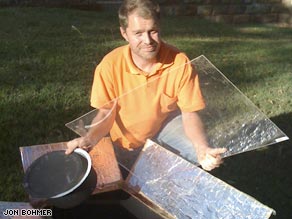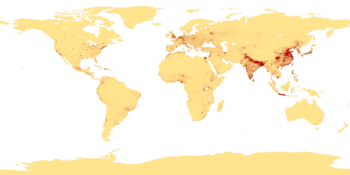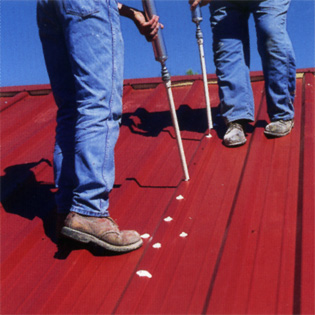I have always said that if we stopped the polluters with the 10 to 20 story smoke stacks (look around, you know who you are). And we stopped airplanes from polluting then we would not have to worry about lawn mowers, barbecues and hotdog roasts. But still – can’t they see what they are doing to me?
:}
http://www.youtube.com/watch?v=VEOV5vWfSgI
Of course freight trains are big polluters too:
http://www.blackanddecker.com/CordlessMower/
The smart, no-mess, no-hassles alternative to gas powered lawn mowers.
Cut the hassle out of cutting your grass with the Black & Decker 24 Volt battery-powered mulching mower. It saves time getting started without the frustrations of pull cords, messing with gas & oil, trips to the gas station, and costly maintenance. And without the fumes and the
spills from gas, you’re also saving the environment from harmful
emissions. And did you hear? It was rated the highest
performing cordless mower in 2008 by a leading
consumer magazine.
Easy to use AND powerful? No brainer!Benefits of the 24 Volt Cordless Mower
 No Gas to Mess With
No Gas to Mess With
– No fuel to store, spill or clean
– No need for tune-ups
 Easy Starting
Easy Starting
– No pull cord
– Starts with a pull of the switch
 Environmentally Conscious
Environmentally Conscious
– Zero emissions in your yard
– Energy Star rated – Reduced noise
– No gas needed for operation, no spills

Service and Support – from the brand you trust
:}
http://www.youtube.com/watch?v=ViC8ZY_-omM&feature=related
No I am not talking about these though I am going to be using one later today
 |
 |
 |
||
|
Sunlawn LMM40 Lightweight Manual Push Reel EcoMower Ships same day MSRP $179.00 Super Sale! $139.00 You Save $40.00! |
Scotts 20 inch Classic Push Reel Lawn Mower Ships same day List Price: $169.00 Our Price: $159.00 You Save $10.00! |
Brill RazorCut 38 Premium Manual Push Reel EcoMower Ships same day List Price: $249.00 Our Price: $239.00 You Save $10.00! |
||
|
Cutting Swath: 16 inches (40cm) Cutting Height: 0.5 to 2.2 inches Weight: 19.3 pounds Suitable for all North American grasses |
:}
http://www.youtube.com/watch?v=wph_bI10eVk&feature=related
This is What I am talking about…A manly TRACTOR:
http://www.electrictractor.com/


The Ultimate Non Polluting Series of
Electric Tractors
for Towing, Mowing and Moving
Can you go GREEN and still be cost effective?
Of course you can with our Electric Ox series of tractors!
Just look at some of the features and benefits of using our state of the art non polluting technology:
- Quiet and Emission Free – ideal for indoor and outdoor applications
- Minimal Operating and Maintenance Costs
- Increased Productivity
- Superior Power and Performance
- Smooth, Intuitive Operator Controls
- Instant On – No Idling required
- Versatile Product Line
To learn more about the progress of the Electric Tractor Corporation Click Here.
To learn more about our Electric Ox product line, Click Here.
:}
http://www.youtube.com/watch?v=-a248mSVtkM
:}
We are talkin bad boys here:
http://electriclawntractor.com/
| Edmond Electric Co. LTD. |  |
 |
 |
Fantastic Investment Opportunity!
Use no more gas to mow your lawn! We offer a reliable, cost effective, and environmentally friendly alternative to conventional gas ride mowers.
About our Company
We are a new company, we became incorporated on Oct 17th 2003, over the last few years we have developed and tested this state of the art design, it will cut up to 2 acres of grass on a 50cent charge,
We have made design changes of a special model for a manufacturer in Europe,
We also are hoping to set-up factories to manufacturer electric tractors in Ontario, Canada, and the US and Europe
We have developed a patent pending special microprocessor controller for the kit: this acts as the brains for the tractor and incorporates the safety and other features of the tractor,
The electric tractor is a real pleasure to operate and you will appreciate the no worries starting in any weather with almost no maintenance features, your neighbours will also appreciate the lower noise levels of your electric tractor.
Sincerely,
Brian Edmond
President
Edmond Electric Co. Ltd
Canada.
http://www.youtube.com/watch?v=MFmrDin4Ovw&feature=related
:}
wowowowowowowowowowow
http://www.modernelectrictractors.com/
Modern Electric Tractors Incorporated
Announcing the first commercially produced battery-operated riding lawn mower built in the United States since Wheel Horse discontinued their models in the mid-1980’s. The METI Classic. Please see the Products tab for pricing and specifications.
We have taken the original General Electric Elec-Trak concept and design of the 1970’s, which is proven, and then advanced it. Our first completed model is the METI Classic. The new METI Classic has a body-style which is very similar to the original Elec-Trak with minor changes. By following the original Elec-Trak design, the new Classic is compatible with the attachments built for the battery-operated Elec-Trak, New Idea, and Wheel Horse series of mowers of the 70’s and 80’s. We have upgraded the electronics, beefed up the frame, raised the height of the rear battery box to accommodate taller batteries, and incorporated a stronger lift.
:}
Now this I can see:
http://www.youtube.com/watch?v=j0JiS6P1YBY&feature=related
:}















 SPRINGFIELD – Alexander “Alex” Joseph Casella, 69, died Thursday, March 5, 2009, at his home in Springfield.Alex was born August 10, 1939, in Taylor, PA, the son of Alexander Joseph Casella Sr. and Josephine M. Cesare Casella. He married Thanawan Kohrianchai on July 1, 2001, in Springfield, Illinois.Alex grew up in Moosic, PA. He received a B.S. in Physics from Villanova University, an M.A. in Physics from Drexel University, and a Ph.D. in Physics from Pennsylvania State University. He began his professional career in 1961 as a Physicist for the U.S. Dept. of Defense at the Frankford Arsenal in Philadelphia. In 1969, he became a professor of Physics at Jacksonville University in Florida. Alex embarked on a 30 year career in 1973 with Sangamon State University/UIS as Professor of Environmental Studies and Physics. He became the Director of Energy Studies at SSU in 1975. From 1989-1996, Alex served as Dean of the School of Public Affairs and Administration. In 2002, he became Professor Emeritus, Environmental Studies and Physics.Alex was the producer and host of about fifty, half-hour interview shows on environment/energy issues starting in 1985. He also hosted two weekly interview shows, “Faculty Focus” and “Peace Talks.”Alex was a member of Sigma Pi Sigma, Illinois Environmental Council, American Assoc. for the Advancement of Science, Union of Concerned Scientists (IL Coordinator), Sierra Club, Charter Member of Better World Society and Worldwatch Institute. He served on numerous boards and committees, including Energy Consultants Associates, Earth Week 1990, Springfield Urban League, and Springfield Area Arts Council. He provided numerous testimonies to committees of the State of IL House and Senate in areas of Energy Policy and was the prolific author of articles, papers, lectures, and letters to the editor on numerous and sundry topics.A loyal supporter of the Democratic Party, Alex ran for Alderman of Ward 7 in 1999, victory narrowly eluding him by a mere 8%.
SPRINGFIELD – Alexander “Alex” Joseph Casella, 69, died Thursday, March 5, 2009, at his home in Springfield.Alex was born August 10, 1939, in Taylor, PA, the son of Alexander Joseph Casella Sr. and Josephine M. Cesare Casella. He married Thanawan Kohrianchai on July 1, 2001, in Springfield, Illinois.Alex grew up in Moosic, PA. He received a B.S. in Physics from Villanova University, an M.A. in Physics from Drexel University, and a Ph.D. in Physics from Pennsylvania State University. He began his professional career in 1961 as a Physicist for the U.S. Dept. of Defense at the Frankford Arsenal in Philadelphia. In 1969, he became a professor of Physics at Jacksonville University in Florida. Alex embarked on a 30 year career in 1973 with Sangamon State University/UIS as Professor of Environmental Studies and Physics. He became the Director of Energy Studies at SSU in 1975. From 1989-1996, Alex served as Dean of the School of Public Affairs and Administration. In 2002, he became Professor Emeritus, Environmental Studies and Physics.Alex was the producer and host of about fifty, half-hour interview shows on environment/energy issues starting in 1985. He also hosted two weekly interview shows, “Faculty Focus” and “Peace Talks.”Alex was a member of Sigma Pi Sigma, Illinois Environmental Council, American Assoc. for the Advancement of Science, Union of Concerned Scientists (IL Coordinator), Sierra Club, Charter Member of Better World Society and Worldwatch Institute. He served on numerous boards and committees, including Energy Consultants Associates, Earth Week 1990, Springfield Urban League, and Springfield Area Arts Council. He provided numerous testimonies to committees of the State of IL House and Senate in areas of Energy Policy and was the prolific author of articles, papers, lectures, and letters to the editor on numerous and sundry topics.A loyal supporter of the Democratic Party, Alex ran for Alderman of Ward 7 in 1999, victory narrowly eluding him by a mere 8%.

 :}
:}





